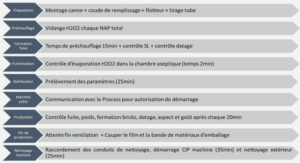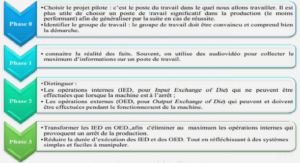M2M communications is the key enabling factor of the practical realization of Internet-ofThings (IoTs). IoT is envisioned as a worldwide network of interconnected objects, where objects are equipped with tiny identifying devices, and intelligently transfers data over the network without any human intervention. This vision of IoT represents a future where billions of everyday objects of surrounding environments will be integrated with Internet to provide various services.
In the literature, several reports have appeared on the prediction of the market growth of the M2M devices in the next few years. For example, Cisco thinks approximately 50 billion of devices will be connected to the internet by 2020. Due to the emerging use of intelligent sensors and actuators in wide range of applications, it is obvious that M2M communications will initiates new market and create new stream of revenue for telecom operators, device manufacturers, M2M enablers and application developers. In order to grasp the full opportunities offered by global M2M market over cellular networks, 3GPP have initiated their working groups for facilitating such applications through various releases of their standards .
A General M2M Architecture
A generic M2M architecture consists of three distinct domains: M2M domain, network domain and application domain .
• The M2M Domain: This domain consists of a large number of M2M devices those are connected with the M2M gateway in a single-hop or a multi-hop manner. An M2M device is equipped with multiple sensors to collect different types of sensed data and a wireless transceiver to transmit sensed data to the M2M gateways. M2M gateways act forward the sensed data to the communication network. M2M area networks also called subnets, make the communication path between the M2M devices and the M2M gateways. ZigBee, Meter bus (M-BUS), Bluetooth, Short-range device (SRD), Ultra wide band (UWB) are some of the major technologies used in subnet. In some scenarios, M2M devices also have the capability to directly access network domain. Like wireless sensor networks, M2M device domain can be classified into two broad types; homogeneous and heterogeneous M2M networks. In homogeneous networks all the M2M devices are identical in terms of battery energy and hardware complexity. These M2M devices are connected to the cellular network via gateway. On the other hand, in a heterogeneous M2M network, two or more different types of nodes with different battery energy and functionality are used. Devices are equipped with both a long range interface, through which they connect to, e.g., a cellular network or satellite system, and a short range interface, which is used to create an ad-hoc capillary network among the terminals;
• Network Domain: The major functionality of this domain is to create a communication path between the M2M devices and application servers. The communication network domain can be wired (Ethernet) or wireless cellular network (i.e., GSM, GPRS, EDGE, 3G,LTE-A, WiMAX, etc.). Although wired connection provide high reliability, high rate, short delay, and high security but due to its cost, maintenance, lack of scalability it may not be appropriate for the M2M communication applications. On the other hand, well established infrastructure, extensive coverage and mobility/roaming support offered by cellular network make it a potential candidate for providing the last mile M2M connectivity. Therefore, in this research work, our focus is on the M2M communications based on 3GPP LTE/LTE-A mobile networks. The LTE network includes Evolved Universal Terrestrial Radio Access Network (E-UTRAN) and Evolved Packet Core (EPC). The EPC consists of a mobility management entity (MME), a serving gateway (SGW), and a packet data network gateway (PDNGW) together with a home subscriber server (HSS);
• Application Domain: In the MTC application domain, MTC users employ one or more MTC servers to control a large number of MTCDs in order to implement various MTC applications. An MTCD can communicate with an MTC server or other MTCDs using the 3GPP bearer services provided by the LTE network. When connected to the LTE network, the MTCD needs to be authenticated and authorized by the network before establishing any communication with the MTC server (Cao et al., 2012).
According to the European Telecommunications Standards Institute (ETSI) M2M architecture and the network improvements for MTC developed by the 3GPP (Zheng et al., 2014) three types of MTC access methods are defined, such as direct access, gateway access and coordinator access.
• Direct access: Like a user equipment device (UE), an MTC can directly access an evolved NodeB (eNB) in cellular networks without any intermediate device. However, this access method may lead to traffic overload in the presence of a large number of MTC devices even though small amount of data is transmitted by each MTC device;
• Gateway access: M2M gateways act like bridge between M2M devices and the communication network. An M2M gateway is equipped with more functional capabilities than the ordinary M2M devices. In gateway access intelligent sensors/ M2M devices sense the environment and sends their data to the MTC gateways. M2M gateways only collects the data from M2M device but do not generates its own data traffic and forward the aggregated data to the eNB;
• Coordinator access: In some cases, MTCDs can be grouped and one MTCD in each group plays the coordinator role to forward its group members data towards eNB. This type of access method reduce congestion on the air interface of the cellular network. It also reduces the power consumption of the overall M2M device domain. Therefore the life time of the battery-constrained devices is prolonged.
INTRODUCTION |






